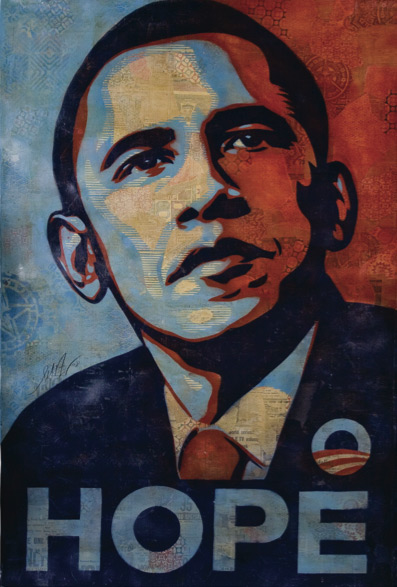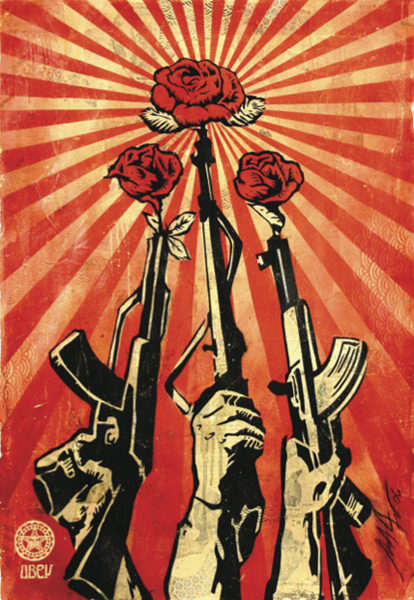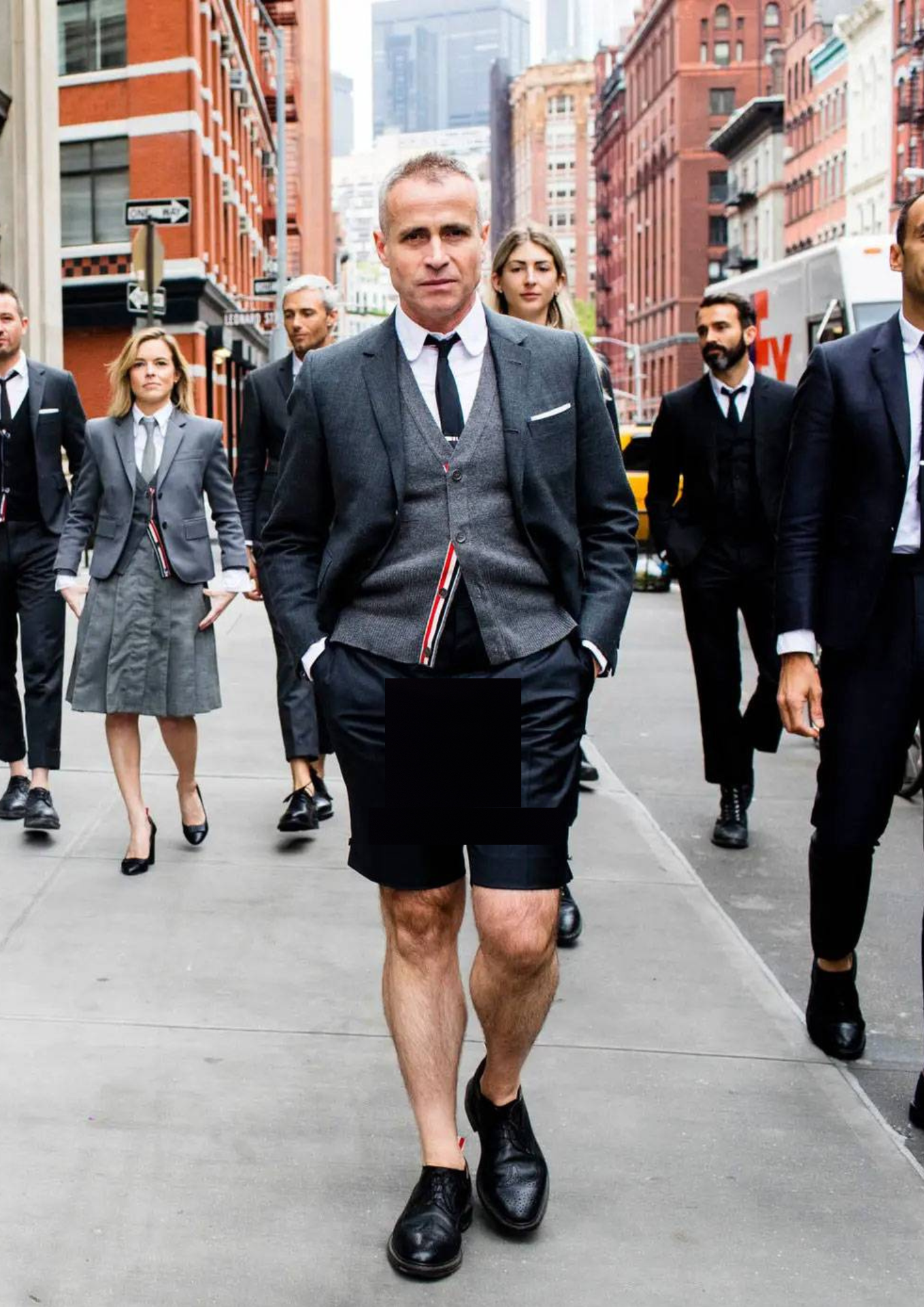By G. James Daichendt, Ed.D.
Shepard Fairey’s art is accessible, antagonistic and controversial. The street artist turned gallery professional critiques capitalism and manipulates political agendas through his gritty, decorative and symbol-latent imagery that viewers find both repulsive and fascinating. Fairey made an impressive splash on pop culture with his campaign poster depicting Barack Obama in 2008. This iconic image symbolized much of Obama’s campaign of hope and change, and regardless of political lines, the image itself made a lasting impact as it was reproduced on everything from billboards to Facebook pages. Since then, Fairey has become an art world darling, most recently being honored with a 20-year retrospective exhibition at the distinguished Institute of Contemporary Art in Boston, Mass.

Fairey’s aim as an artist is to reawaken the viewer to their surroundings. According to the artist, this political, environmental and social environment we engage in is not an ideal one. To call attention to the powers that be, Fairey creates arresting images to jostle viewers’ thinking. Fairey’s sticker campaign titled “OBEY” is comprised of works encountered in public spaces such as street corners and trashcans. Fairey does not simply desire to create a beautiful object but rather hopes to stop the viewer with the direction to “OBEY.” A possible consumer or political command, this deceivingly simple sticker becomes a philosophical statement. Should I obey? Am I obeying? To whom? Why? Through street art Fairy causes a sociological reaction that prepares the viewer to think a bit more deeply about their behavior.
Typically unsolicited, street art includes a variety of media, most notably spray paint, stencils and posters. However, there is a distinction to be made between vandalism and the intent of street artists, although the lines occasionally blur. Fairy’s troubles with the law (he has been arrested more than one dozen times) strengthen his credentials as a street artist unconcerned with bowing to the establishment.
Fairey’s critiques of consumer culture, however, have not lessened his desire to profit from it. Questioning everything, he draws inspiration from pop culture, rock posters and Americana. In this fashion Fairey’s work draws similarities to the pop icon Andy Warhol’s capacity to critique popular culture yet be part of it. Warhol obsessed over celebrity and consumerism and aptly critiqued these ideas through artwork depicting celebrity and pop culture. Fairey has a similar agenda, albeit much more political and grungy. War is a subject ripe for criticism as the United States is embattled in many foreign lands. Images of planes, guns and grenades juxtaposed with innocent symbols of peace awaken our senses to notice what has become commonplace in the newspapers and daily news programs. In this fashion 39-year-old Fairey represents a youthful concern with social justice intent on making a mark on society. From the street to the museum, Fairey encapsulates these passions with an aesthetic and message that epitomizes issues of importance. Capitalizing on this critical agenda is a delicate line to balance as Shepard Fairey asks you to “OBEY” his message.

To learn more about Shepard Fairey, visit ObeyGiant.com




























